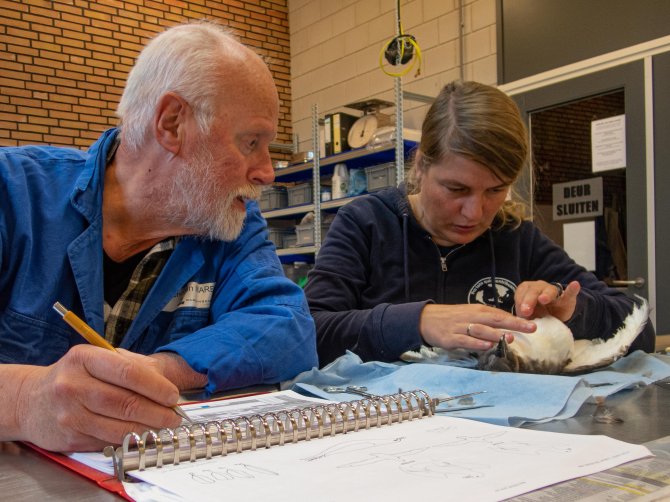
News
How much plastic is found in the stomachs of Northern Fulmars?
Wageningen Marine Research annually reports on the monitoring study of plastics in stomachs of Northern Fulmars beached in the Netherlands.
One study - two reports
Detailed analyses of results are clearly essential for our scientific reports. But for the volunteers that collect the beached fulmars, the results of one’s ‘personal’ bird(s)’ are at least as interesting. That is why we try to publish two reports: one report with details of individual birds and one with the overall scientific results.
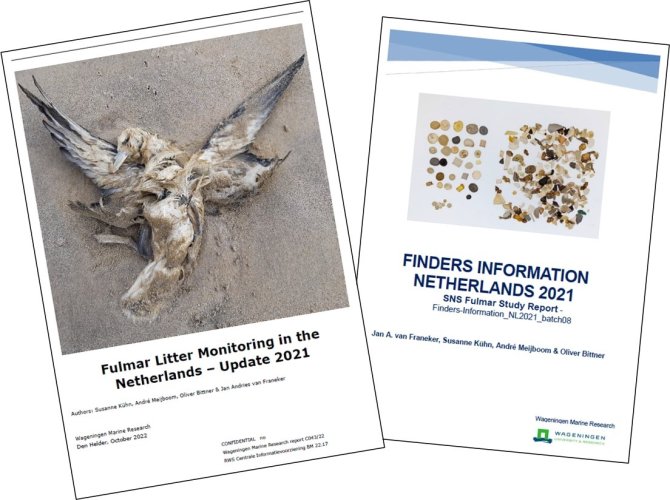
The making of...
Photographic documentation of all plastics from each stomach is a serious job. In the year 2021 we investigated 81 fulmars and found a total of 2605 ingested plastic particles. Often these particles are small and require patience to be orderly documented using macrophotography. We’ve made a short video of that work.
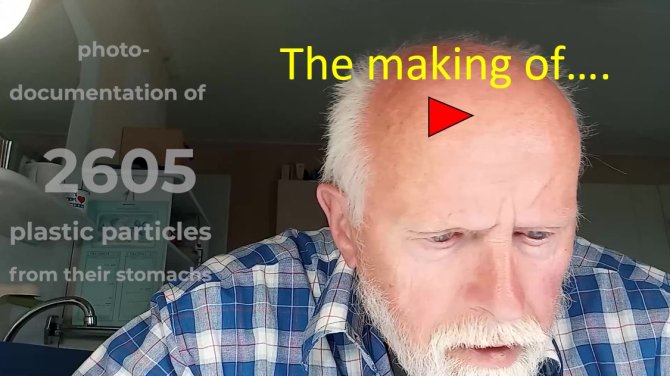
Volunteer Report 2021
Among the 81 fulmar corpses investigated, 71 birds contained a stomach suitable for the plastic monitoring program. However, the report discusses all 81 birds, in order to present data on individual age, sex etc. We do so in order to emphasize that we prefer to occasionally receive old decayed corpses without stomach, than that potentially valuable research material stays behind on the beach.
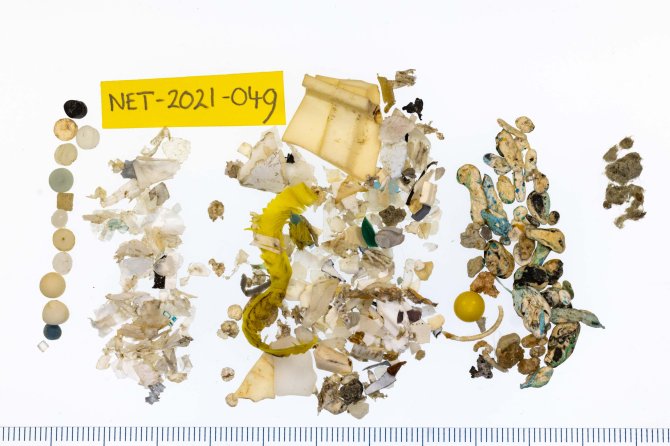
Decreasing trend interrupted
Alas, for a long period we have observed decreasing quantities of plastics in fulmar stomachs, but in the past two years that trend was broken, with especially poor results for the year 2021. Our standard 10-year regression tests were unable to detect significant changes. In the present situation (averaged over the past five years 2017-2021), 94% of 197 investigated stomachs contained plastic, on average 26.5 pieces with a mass of 0.25 gram. Overall 50% of the fulmars contained more than 0.1 g plastic (Fulmar Threshold Value FTV%) whereas the European policy target prescribes that this value should be reduced to under 10%. Model calculations of the annual percentage of birds exceeding the 0.1 g plastic still indicate a significant longer term decrease and suggest that if that trend continues, the 10% FTV target could be reached around the year 2066.
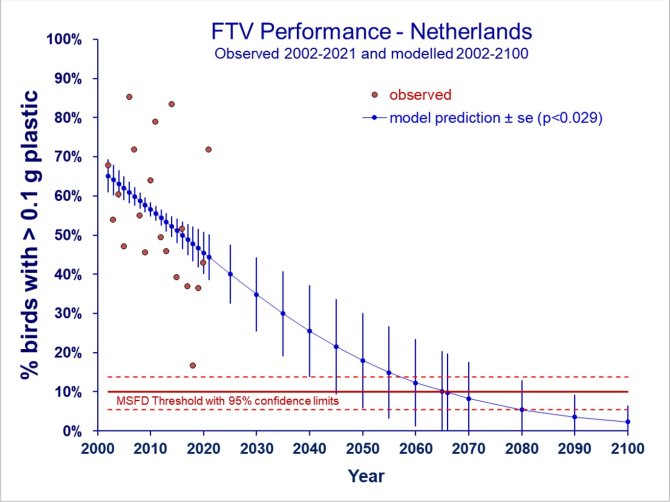
Publications
- Van Franeker, J.A., Kühn, S., Meijboom, A., Bittner, O., 2022. Finders Information - Netherlands - 2021. Wageningen Marine Research, SNS Fulmar Study Report, Den Helder, The Netherlands
- Kühn, S., Meijboom, A., Bittner, O., Van Franeker, J.A., 2022. Fulmar Litter Monitoring in the Netherlands – Update 2021, Den Helder, The Netherlands,
